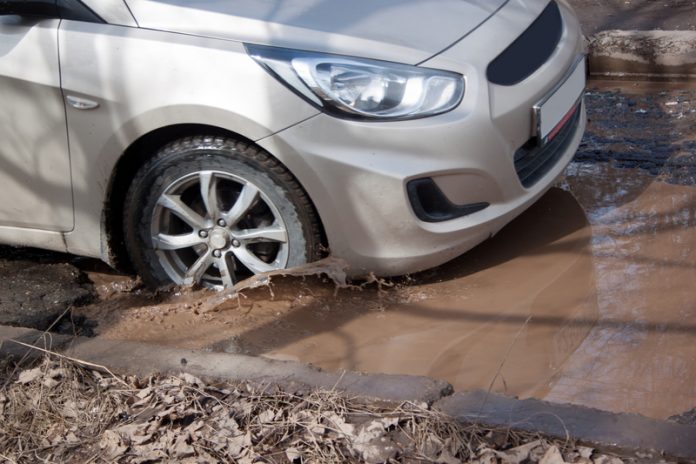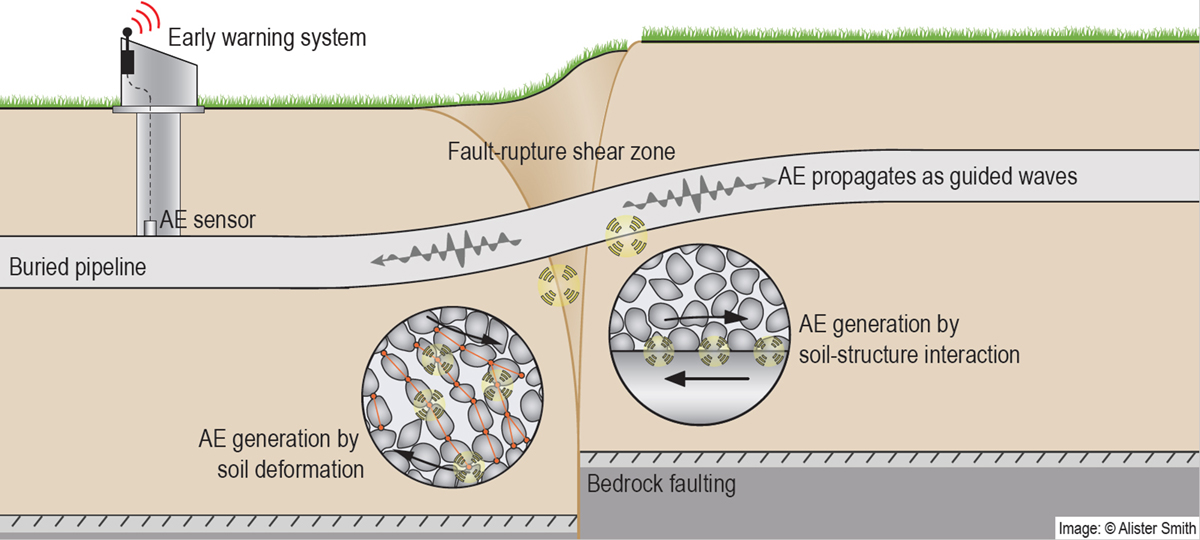Dr Alister Smith, a UK Engineering and Physical Sciences Research Council Fellow based at Loughborough University, is developing novel infrastructure health monitoring technologies
Infrastructure is vital for society – for economic growth and quality of life. Existing infrastructure assets are rapidly deteriorating, the rate of which is accelerating with increasing pressures from climate change and population growth (e.g. flood levels, weight and frequency of trains) and new-builds are being designed and constructed to withstand largely unknown future conditions. Society, therefore, urgently needs to be better prepared to face these grand challenges by exploiting technology to increase understanding of asset deterioration and improve decision making and asset management.
Infrastructure networks cover vast geographical areas to transport people and products (e.g. water, oil and gas) and hence are critical lifelines which society heavily relies on. These assets rest on or are buried inside soil (i.e. underground), which exposes them to potential damage from ground movements. Deterioration can have catastrophic economic, environmental and societal consequences and the service of entire networks can be terminated.
A transformation in infrastructure health monitoring capability is urgently needed to enable targeted and timely interventions, which should provide: high accuracy and reliability, high spatial and temporal resolution, remote and real-time functionality and alerts and early warnings.
Moreover, it is essential that the technologies are low cost to ensure they can be widely distributed across entire infrastructure networks. The Listening to Infrastructure research programme aims to provide this transformation in monitoring capability by monitoring acoustic emission (AE).
Acoustic Emission (AE)
Proportions of the energy dissipated during the deformation of particulate materials (i.e. soil) are converted to heat and sound. The high-frequency (>10kHz) component of this sound energy is called acoustic emission (AE). AE monitoring offers the potential to sense particle-scale behaviours that lead to macro-scale responses of granular materials.
AE is widely used in many industries for non-destructive testing and the evaluation of materials and systems; however, it is seldom used in geotechnical engineering, despite evidence of the benefits, because AE generated by particulate materials is highly complex and difficult to measure and interpret.
AE is generated in soil bodies and soil/structure systems through a suite of mechanisms including: inter-particle friction; particle contact network rearrangement (e.g. the release of contact stress and stress redistribution as interlock is overcome and regained); the degradation of particle asperities; particle crushing; and friction at the interface between the soil and structural element.
Why AE?
Instruments and techniques to monitor geotechnical assets do exist, but none is without technical limitation or prohibitive cost. Conventional approaches typically provide localised information on deformations or groundwater at discrete time intervals. Nascent technologies are beginning to provide continuous measurements (e.g. fibre optics), but to retrofit hundreds of thousands of kilometres of assets with these sensors would be prohibitively expensive. Continuous monitoring is essential as it provides information on the condition of assets throughout their life-cycle and allows any changes to stability/integrity to be communicated in real-time.
AE has the potential to increase our understanding of how assets are deteriorating, which could lead to improved design approaches and to extract more information about asset condition than existing techniques do: not only deformation behaviour, but also, for example, changes in stress states, transitions from pre- to post-peak shear strength (i.e. deterioration of soil strength) and using correlation techniques it will be possible to locate the source of AE to target maintenance and remediation activities.
AE sensing will also provide real-time warnings which will enable safety-critical decisions to be made to reduce damage and lives lost because of geotechnical asset failures. The number of asset monitoring locations required per unit length to achieve sufficient spatial resolution will be less than other monitoring techniques and at a significantly lower cost.
Listening to Infrastructure
The Listening to Infrastructure research programme is developing continuous, remote, real-time AE monitoring systems that can be distributed across geotechnical infrastructure assets (e.g. buried pipelines, foundations, retaining structures, tunnels) to sense soil and soil/structure interaction behaviour and provide early warnings that will enable targeted and timely interventions.
The aim of the current UK Engineering and Physical Sciences Research Council Fellowship is to develop analytics to interpret the AE generated by geotechnical infrastructure assets, enabling implementation in autonomous monitoring systems. If we can listen to geotechnical assets with intelligent sensors – analogous to a stethoscope being used to listen to a patient’s heartbeat – we will be able to provide information on the condition of infrastructure and early warning of deterioration in real-time.
Figure 1 shows an illustration of the Listening to Infrastructure monitoring concept: the fault-rupture is propagating upwards from the bedrock through the soil body and intersecting the buried pipe, which can lead to tensile or buckling failure and hence potentially catastrophic consequences.
Progress and Future Work
Novel methodologies to interpret AE generated by deformation of soil bodies and soil/structure interaction and by seepage-induced internal erosion, have been developed using an extensive programme of controlled element and full-scale laboratory tests, including experiments performed at the world-leading buried infrastructure research facility at Queen’s University, Canada, in collaboration with Professor Ian Moore.
In addition, new understanding of how AE propagates in buried infrastructure is enabling source location methodologies to be developed. Plans are in progress with project collaborators to perform full-scale field-testing with in-service assets, which will demonstrate performance and benefits in intended applications and environments and progress the research through Technology Readiness Levels to support exploitation.
Please note: this is a commercial profile
Dr Alister Smith
EPSRC Fellow and Lecturer in
Civil Engineering Infrastructure
Loughborough University
Tel: +44(0)1509 565 179












